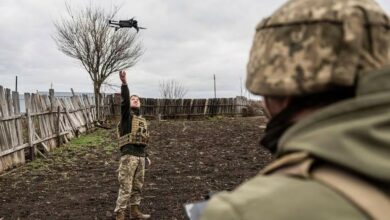TCalled OverDrive, the solution enables navigation of a vehicle system without human intervention across off-road terrains at 45 miles (72 kilometers) per hour under various conditions.
The announcement followed the company’s participation in DARPA’s ongoing Robotic Autonomy in Complex Environments with Resiliency (RACER) program to develop an algorithm providing seamless maneuvers for unmanned ground vehicles.
Alongside Overland AI, the latest RACER phase involves support from NASA’s Jet Propulsion Laboratory, Carnegie Robotics, Georgia Institute of Technology, and Duality Robotics.
Moreover, the company signed a $18.6-million contract for the US Army and Defense Innovation Unit’s Ground Vehicle Autonomous Pathways program.
This separate effort seeks a “robust, capable, and compliant software” that will be integrated into the army’s next-generation Robotic Combat Vehicle.
The system is expected to adapt to “a range of diverse and challenging” conditions while maintaining different modes of autonomy and compatibility with other payloads.

“We are committed to the advancement of ground vehicle autonomy to support national security and minimize risk to our warfighters,” Overland AI CEO Byron Boots stated.
“With this funding, we can accelerate development and create high-performance ground autonomy software designed for uncrewed vehicles in any contested terrain.”
RACER and Robotic Combat Vehicle Programs
DARPA launched the RACER program in 2020 to produce a self-driving platform that will “maximize” sensors and mechanical limits that can address or “exceed” warfighter driving performance.
“In order to achieve RACER goals of increased speed and resilience, we need to embrace learning approaches that automatically tune system parameters in real time,” RACER Project Manager Dr. Stuart Young explained during the initiative’s debut.
“Successful software will extract features from sensor data and use that information to make on-the-spot driving decisions.”
Meanwhile, the US Army conceptualized the Robotic Combat Vehicle campaign in 2019 to build up to three variants of ground drones supporting dismounted troops.
The resulting vehicles are set to weigh 10 to 30 tons and be transportable via helicopters and cargo aircraft.
They will be equipped with anti-tank guided missiles, direct-fire systems, and other weapons to sustain survivability and mobile support functionality on the battlefield.












